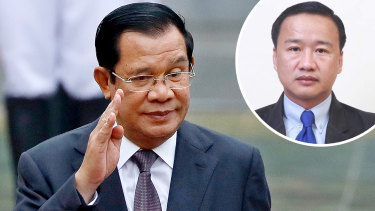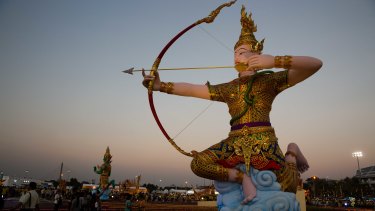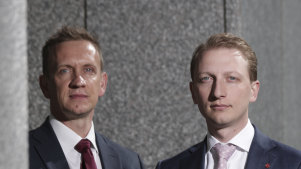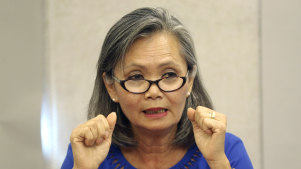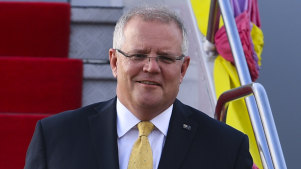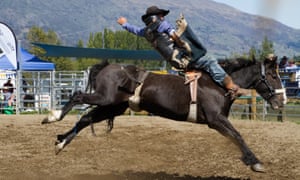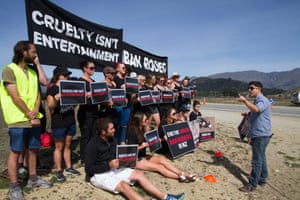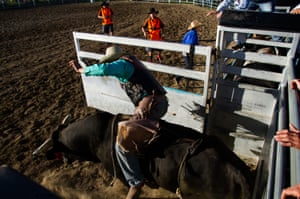VOICE
Don’t Hold Your Breath for Democratic Change in the Middle East
The region is accustomed to cycles of protest and political upheaval, so it’s better not to bank on successful revolutions.
There were a number of major developments in the Middle East over the last 12 months: the bombing of Saudi Arabia’s Abqaiq oil facility, Turkey’s invasion of northeastern Syria, the election of a new Tunisian president, the United Arab Emirates’ decision to withdraw from Yemen, and the U.S. affirmation that Israeli settlements are not “inherently illegal.” But something more important happened in the Middle East in 2019. Just as everyone was getting used to the idea that the so-called Arab Spring was dead, street demonstrations swept through the region. The fact that protests erupted is not as interesting as whether people power will shape politics in the Arab world into 2020. That seems likely, but not necessarily in ways that some analysts expect and many Arabs hope.
With so much international media focused on the demonstrations in Hong Kong, one might be excused for forgetting that people in Sudan, Algeria, and Morocco were out in the streets months before Hong Kongers began venting their anger at Chief Executive Carrie Lam and Beijing. There were also protests in Egypt, though they were quite small, and larger demonstrations that are ongoing in Iraq and Lebanon.
The response in Washington has been generally low-key, indicating that U.S. policymakers have learned a lesson since they romanced the barricades during the Arab Spring of 2011 to 2012. With the exception of Tunisia, the much-anticipated transitions to democracy in Egypt, Libya, Yemen, and Syria never materialized. Yet that does not mean that the contradictions of political systems have been resolved. Instead, leaders have used force to silence those who have drawn attention to these problems.
The current protests across the region underscore the extent to which this strategy has failed. Clearly, people in the Middle East are dissatisfied with a status quo that offers them very little in the way of economic opportunity and few freedoms, robbing them of their dignity. Seen this way, all the antecedents for protests that existed in 2010 were present in 2019 and will continue to exist in 2020.
So what happens next? The intellectually honest answer is that no one knows. As inspirational as it may be to witness young people willing to risk their lives in Baghdad’s Tahrir Square, those risks may not pay dividends in terms of more open, accountable, and democratic politics in Iraq. It is best to think about demonstrations in the Arab world and what they mean for 2020 along a range of possible outcomes from stalemate and civil war to coup and genuine democracy.
It is impressive that protesters have turned out in the street for as long as they have in Algeria (now going on 11 months), but it suggests that neither they nor those in power are willing to come to a mutually agreed-upon way forward—and that neither can impose a solution on the other.
That is not to say that the demonstrators have nothing to show for their time in the streets. After all, they forced Algeria’s longtime president, Abdelaziz Bouteflika, from office last spring and, perhaps having learned from the Egyptian experience that the military is not to be trusted, have remained committed to popular protest. For all of the military’s strength, they have not been able to break the spirit of the protests. Yet for the demonstrators, the system they rose up against remains intact and does not seem particularly weak.
The recent presidential election that was supposed to end this logjam has changed little despite Abdelmadjid Tebboune’s victory with 58.1 percent of the vote. Many Algerian demonstrators regard the new president as a tool of the military and opposed the election on the grounds that it was an effort to undermine the protests and demands for fundamental political change.
There is also a stalemate in Iraq between politicians who benefit from the system of sectarian and ethnic spoils set up after the 2003 U.S. invasion and protesters who want something new. Iraq’s politicians are now scrambling to find yet another new prime minister and promising electoral reforms. The demands of the demonstrators go well beyond tinkering with a corrupt and dysfunctional political system, however.
While protesters have the power to force a change of prime minister and can remain in the streets, they do not seem to have the means to realize their broader goals. The country’s politicians and parties have grown rich off the current system and will do everything to defend it, but they do not have an answer for the protests. Even violence that has taken the lives of at least 400 people and injured as many as 10,000 has done little to cow those who want change. The result is stalemate
There is always the possibility that the deadlocks in Algeria, Iraq, and elsewhere will come undone. And one of the outcomes few seriously considered at the height of Egypt’s revolution in 2011 was a narrower and fiercer dictatorship—yet this is precisely what happened in Egypt. It seems strange, especially when one hears it from Egyptians, that life was better under Hosni Mubarak, before the Arab Spring. The fact that people feel that way underscores the brutality of the rule of President Abdel Fattah al-Sisi, who seems, over time, to enjoy an even smaller support base than Mubarak did.
Any of the countries currently experiencing demonstrations may end up in a similar place. The Algerian armed forces have a history of employing violence. Elements of the Sudanese armed forces tried and failed to put down protests, but there is no reason to believe that they could not try again and perhaps succeed. Iraqis have lost confidence in their institutions (including religious ones), which provides an opportunity for a political entrepreneur to emerge declaring that only they can fix it.
Over the years, analysts have declared that the “era of coups in [name a country] is over.” Do not believe it. It’s pure speculation. After all, Mubarak was supposed to have resolved the problem of civil-military relations when he fired Field Marshal Abdel Halim Abu Ghazala in the late 1980s. The military overthrew him in February 2011, and they did the same to his successor two years later. In Turkey, military officers were supposed to be back in the barracks permanently after European Union-related reforms allegedly bound them to civilian control in the early 2000s. In 2016, coup plotters failed when they tried to oust President Recep Tayyip Erdogan, but what matters is that some officers saw a coup as an option.
Then there is always the possibility that protest leads to civil war, an outcome that seems plausible anywhere in the region, but especially Iraq. The Iraqi state is not much of a state; it can deny citizens goods and services through rank incompetence, corruption, and bureaucratic red tape. But it lacks the attributes of statehood that really matter: The Iraqi government does not have a monopoly over violence, and it cannot enforce property rights. In between and intermingled with the Iraqi state’s security forces are a variety of militias with varying agendas and diverging political loyalties. It’s not hard to see how the current stalemate in Iraq slides into a broader civil conflict even if the political parties compromise on a prime minister who promises a package of reforms.
Of course, demonstrations could also produce transitions to more open and democratic political systems. That would be wonderful, but when social scientists run the numbers, the probability of a democratic change is low. Tunisia, which has long been unique in the Arab world for assorted reasons, may yet remain a democratic outlier. This is not because Arabs are culturally predisposed to authoritarianism but because of the odds stacked against Arab democrats and the threat to their project by people with guns, money, and international support. Still, there is always a chance of a democratic breakthrough. Just keep in mind that if anyone predicts that a given country will become a democracy, it is a lucky guess rather than keen analytic judgment.
Another publication’s editor once called and asked me to participate in a survey of predictions for the coming year. My answer—that most, if not all, the predictions his magazine gathered would be wrong—surprised him.
When thinking about the demonstrations unfolding in the streets of the Middle East, it is far better to understand a range of outcomes. That way no one is surprised when things go from inspirational to depressing, and maybe—just maybe—the United States can temper its zeal to help bring about change and let Arabs sort out their domestic politics. What will happen in the Middle East in 2020 after a year of protest is wide open. If there is anything to prepare for, it is the idea that anything can happen.

